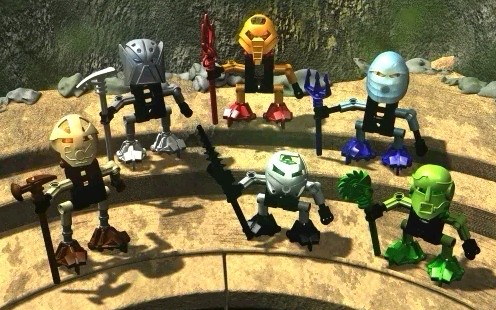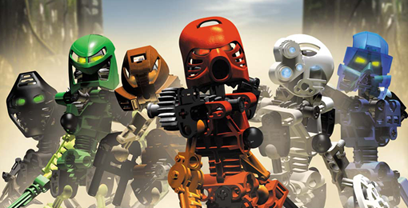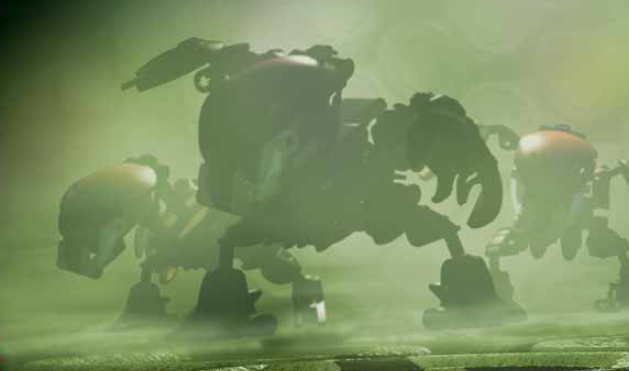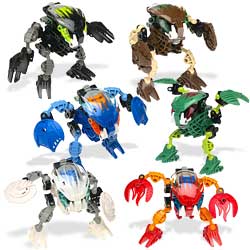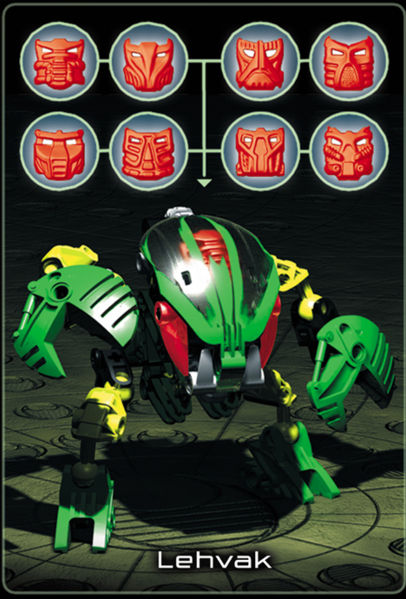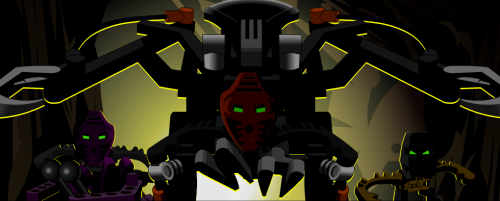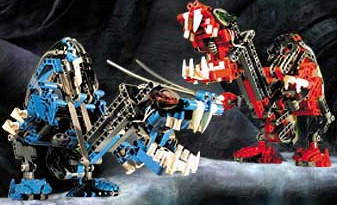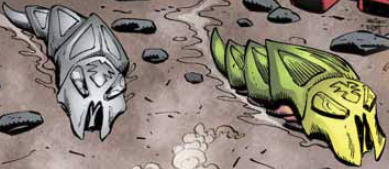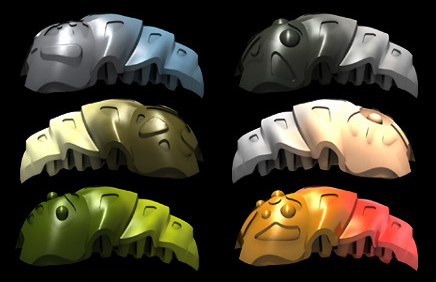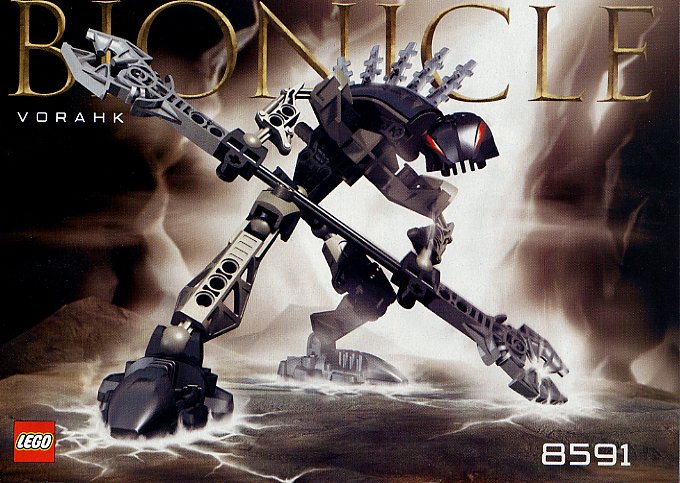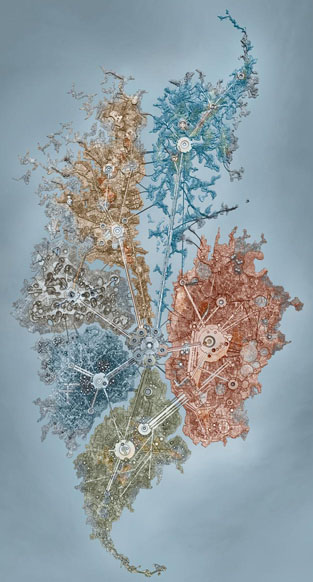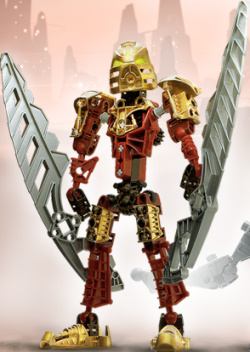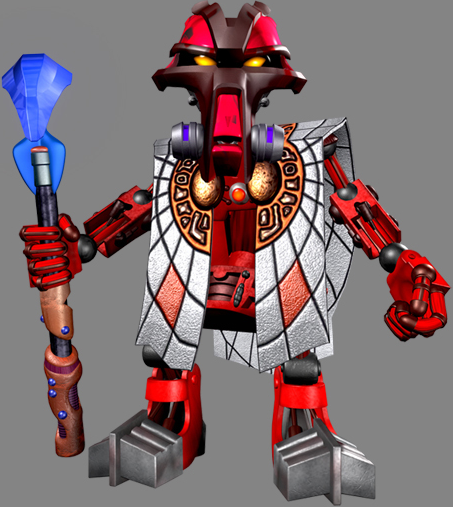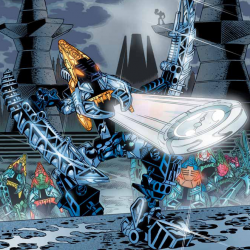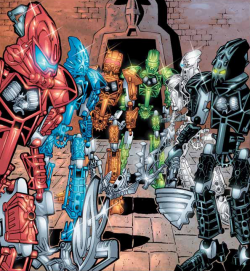Running from 2001 to 2010 Bionicle was a LEGO IP created, yes, mainly to sell toys. The first Bionicle sets were pretty much "build your own action figure" with a knob on the back, when you twisted it the figure would whirl it's arms/weapons, and you could fight with them that way, knocking masks off to "win." Later sets were more sophisticated, with various projectile weapons to get lost until you found them with your feet getting up at 3 am. Bionicle came at an odd time for me, when I was just a bit old for the target demographic, jaded enough to scoff at the merchandising of the thing, but young enough to get sucked in anyway. My best friend at the time was young enough to get totally into Bionicle, and MNOG finished drawing me in.
What's that you say? What's MNOG? Well Bionicle was always meant to be a thing of many different media, with books, a comic book title, a Gameboy game (it kind of sucked) as well as toys. But it was also one of the first franchises to really exploit the internet, with online videos and MNOG a point-and-click puzzle game called the Mata Nui Online Game, or MNOG. This was brilliant, because it let you explore the setting and interact with the characters. In fact, Holy crap, MNOG is cached in a bunch of places (complete with cutscenes section) even today, thirteen years later. Yeah, it's kind of simple now, but in the days of dial-up it was huge.
I'm going to do my best to cover everything, from all sources. There are books with events that aren't duplicated in the comics and vice-versa. There are even four direct-to-DVD movies. For conveniences sake I'll be breaking things into three sections like the books, Bionicle Chronicles to start with, then Bionicle Adventures, then Legends.
But I should really talk about the story, Bionicle always had strong storytelling, well the characterization is kind of weak a lot of the time, but they always know how to dangle enough mysteries to keep you engaged. Our story takes place on the island of Mata Nui, named for the Great Spirit worshipped by the locals, the matoran, originally called Tohunga (1).
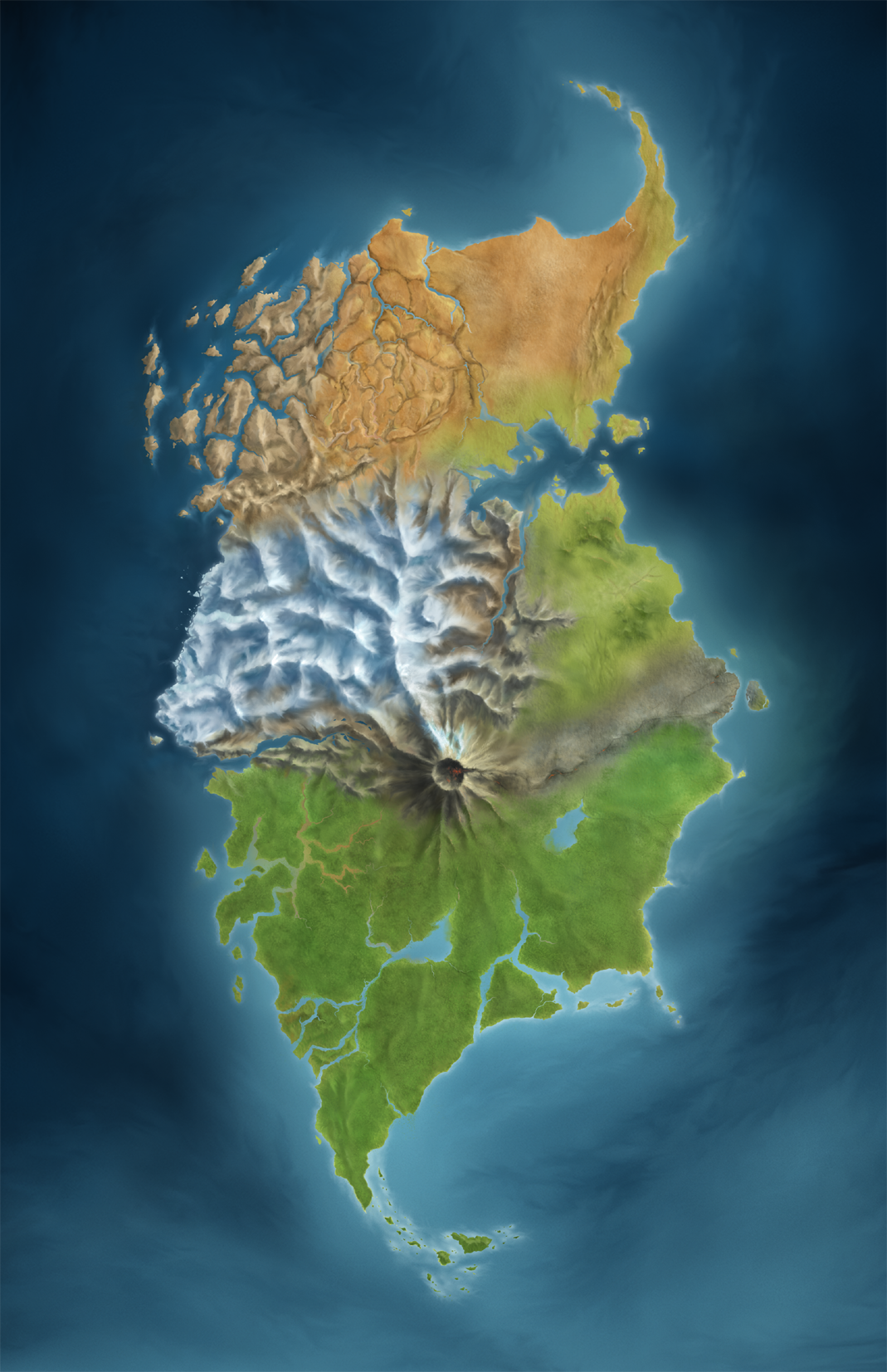
The matoran come in six flavors around elemental lines, the four classical elements (earth, air, fire, water) with earth divided in two: earth and stone, and with ice added. Aside from coloration, each matoran has special attributes based on their element. They live in villages called koro segregated by element and commanding a territory (wahi) for some distance around. Each koro is led by an elder called a turaga. The matoran may look like robots, but they're not. They breathe, they eat and drink. One oddity is the need for kanohi masks, an unmasked matoran will eventually weaken and fall into a coma. Some masks, in the same shape as others, grant a special power but can only be wielded by beings of exceptional willpower, such as the turaga. All the turaga have mask powers that, with some guile, let them engage or evade even the toughest of predators.
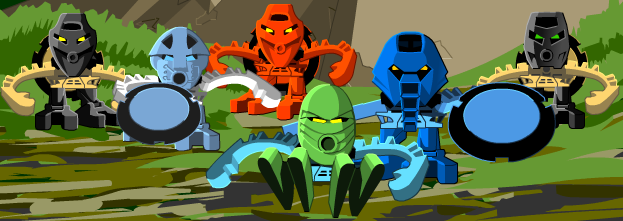
Ta-Koro, the village of fire, is perched in the caldera of Mangai Volcano atop a thick spire of rock. A bridge connecting the village to the road is made of three sections that sink into the lava when not in use. Ta-Koro is easily the most defensible and militant village, and Ta-matoran place a premium on duty and self-sacrifice, most matoran serving as reservists for the powerful Ta-Koro guard. Ta-matoran are so heat resistant the old videogame rule where "as long as I don't actually touch the lava I'm okay?" Actually applies to them. Their leader, Turaga Vakama, is respected as one of the wisest of the elders with the ability to see visions of the future in the Sacred Flame, and the mask-power of invisibility. Some other notable Ta-Matoran are Jaller, the Captain of the Guard, Kapura, his deputy, and Takua, the viewpoint character for both the gameboy game and MNOG, who as our story begins was banished for his perpetual wandering off and questioning/annoying others. Ta-wahi also include the Burned Forest and the observatory where matoran astrologers come from around the island to study the stars and figure which of the matoran prophecies is nearing fulfillment now.
Le-Koro, village of air, is a treetop village in the jungles of Le-wahi. Turaga Matau is like a playful old monkey, with a mask of illusion that lets him impersonate any matoran or animal, or a bush or rock. The Le-Koro Guard, led by Kongu, ride gukko birds into battle. Tamaru is a bird-tamer who wishes more than anything to join the airborne guard.
Ga-Koro, the water village, is built of and on a series of gigantic lily pads on the ocean. Ga-wahi is run through with rivers feeding into the sea, and over the village is a small mountain carved in the likeness of Toa Gali. Ga-matoran are strong swimmers, and can hold their breath far longer than other matoran. For whatever reason, they're the only matoran at first who are female, all of them, and fish for food. Their turaga, Nokama, can use her mask to speak and read all languages, useful for deciphering ancient texts and doing the Dr. Doolittle thing to convince beasts to leave the village alone, or even to defend it. Macku and Hahli are the big names in this village.
Onu-Koro, earth, is the only village without an attendant territory. Onu-Koro is deep underground, where industrious workers mine ever-glowing lightstones and other materials. It was never exactly meant that way, but the tunnels and shafts of Onu-Koro extend throughout the island, so once they started etching directions into the walls, the "Onu-Koro Highway" became one of the fastest ways of getting around the island, so long as you carry a lightstone and aren't afraid to maybe meet a giant Rahi in close quarters. Onu-matoran are really strong, and have superior night-vision to other matoran. Not as good as Turaga Whenua though, that guy can see perfectly well even in the total absence of light. The tunnels around Onu-Koro are kept reasonably clear by the Ussalry, crab-riding cavalry, led by Onepu. Other notable Onu-matoran include Taipu, a miner and Nuparu, a 3rd-class tunnel engineer.
Po-Koro is the village of stone, in the middle of the trackless desert of Po-wahi. The matoran here occupy their days shepherding sheep/goat-things, carving elaborate sculptures and playing a game called kohli. Kohli is essentially football/soccer with two differences. First, a kohli team is two people a goalie and a scorer. Second, the ball is made of stone. This is possible because Po-matoran are debatably the strongest and definitely the toughest of the matoran. Their leader is Turaga Onewa, with the mask power of mind-control. The two Po-matoran we see the most of are Hewkii (earlier spelled Huki) the world's greatest kohli player and Hafu, a gifted sculptor best described as "extremely neurotic."
Finally, the ice village of Ko-Koro is built on the slope of the massive Mt. Ihu. Ko-matoran are not bothered at all by the cold, and tend to be aloof and reserved in dealing with others. Their leader is Turaga Nuju, who uses his power of telekinesis to trigger preset traps or avalanches to protect the village. Nuju speaks the language of birds, and only his faithful right hand, Matoro, can interpret the turaga's whistles, chirps and squawks. So Matoro basically never leaves Nuju's side. Kopeke is a master ice-carver, maker of many bridges and sculptures.
In the center of the island is the Kini Nui, the Great Temple where all matoran gather annually for feasts, festivals and games to honor the Great Spirit.
But life isn't all peaceful, for as long as anyone can remember the matoran and their villages have been under siege by the Makuta. Makuta is the sort of devil of matoran myth, the brother of their Great Spirit who betrayed him and with a spell cast him into eternal slumber "In the time before time." Makuta corrupts kanohi masks, on both Matoran and the giant animals known as rahi, and those corrupted join the Makuta hive-mind. Some of these rahi are huge, and dangerous enough when not directed by the forces of darkness. Like giant scorpions, giant dragonflies with talons perfect for scooping up fleeing matoran, tigers larger than a house, Tarkava boxing-lizards and more. Sooner or later something's gotta give, which brings us to the beginnning.
(1) this term, like a lot of names, came from Maori myth and culture. Some Maori objected, most strenuously to the use of Tohunga (wise man) to refer to mere villagers. Lego sent down their legal team and.... actually compromised by changing the name and everything else the Maori didn't like in exchange for their seal of approval on the rest of it. And went on to write the book on how to treat other cultures respectfully even while mining them for ideas, so Lego gets class points for that.
